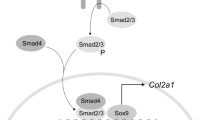Abstract
The proposed use of methanol (H3COH) as an alternative to fossil fuels has prompted concern about potential health risks resulting from widespread environmental exposure. Methanol is teratogenic in rodents and, although the exact toxic species is not known, teratogenesis may result from the enzymatic biotransformation of H3COH to formaldehyde (CH2O) and formic acid causing increased biological reactivity and toxicity. A protective role for the antioxidant glutathione (GSH) has been described for H3COH, CH2O and formic acid toxicity in various biological systems but has yet to be evaluated in the developing conceptus. Whole embryo culture studies were conducted using GD 10-11 rat conceptuses to elucidate the relationship between H3COH and its metabolites and GSH status. Methanol exposure produced a decrease in normal growth parameters and a dose-dependent loss of viability. CH2O had deleterious effects on embryo growth and viability. Sodium formate (HCOONa) exposure resulted in a high mortality rate but viable embryos did not manifest any abnormalities. Methanol, CH2O, and HCOONa all produced a significant depletion of GSH in both embryo and VYS. Inhibition of GSH synthesis by L-buthionine-S,R-sulfoximine (BSO) treatment exacerbated H3COH, CH2O and HCOONa embryotoxicity. Interestingly, only H3COH/BSO and CH2O/BSO co-treatments caused increased malformation, while embryos treated with HCOONa/BSO did not produce any developmental deformities. These results implicate CH2O as the most embryotoxic H3COH metabolite, on a molar basis, in terms of causing dysmorphogenesis, alterations of normal growth parameters and embryolethality. HCOONa was selectively embryolethal and did not produce dysmorphogenesis. CH2O toxicity is potentiated by GSH depletion, indicating that GSH may be more directly involved in its detoxication in the embryo.
Similar content being viewed by others
References
Andrews JE, Ebron-McCoy M, Kavlock RJ, Rogers JM. Developmental toxicity of formate and formic acid in whole embryo culture: a comparative study with mouse and rat embryos. Teratology. 1995;51:243–51.
Andrews JE, Ebron-Mccoy M, Schmid JE, Svendsgaard D. Effects of combinations of methanol and formic acid on rat embryos in culture. Teratology. 1998;58:54–61.
Bolon B, Dorman DC, Janszen D, Morgan KT, Welsch F. Phase-specific developmental toxicity in mice following maternal methanol inhalation. Fundam Appl Toxicol. 1993;21:508–16.
Bradford MM. A rapid and sensitive method for the quantitation of microgram quantities of protein utilizing the principle of protein-dye binding. Anal Biochem. 1976;72:248–54.
Fahey RC, Newton GL. Determination of low-molecular-weight thiols using monobromobimane fluorescent labeling and high-performance liquid chromatography. Methods Enzymol. 1987;143:85–96.
Fantel AG, Juchau MR, Tracy JW, Burroughs CJ, Person RE. Studies of mechanisms of niridazole-elicited embryo-toxicity: evidence against a major role for covalent binding. Teratology. 1989;39:63–74.
Farbiszewski R, Witek A, Skrzydlewska E. N-acetylcysteine or trolox derivative mitigate the toxic effects of methanol on the antioxidant system of rat brain. Toxicology. 2000;156:47–55.
Food and Drug Administration (FDA). 1984. Frequency of use of cosmetic ingredients. FDA Database. Washington, DC: FDA.
Hansen JM, Carney EW, Harris C. Differential alteration by thalidomide of the glutathione content of rat vs. rabbit conceptuses in vitro. Repro Toxicol. 1999;13:547–54.
Harris C, Namkung MJ, Juchau MR. Regulation of intracellular glutathione in rat embryos and visceral yolk sacs and its effect on 2-nitrosofluorene-induced malformations in the whole embryo culture system. Toxicol Appl Pharmacol. 1987;88:141–52.
Harris C, Juchau MR, Mirkes PE. Role of glutathione and hsp 70 in the acquisition of thermotolerance in postimplantation rat embryos. Teratology. 1991;43:229–39.
Harris, C. Glutathione biosynthesis in the postimplantation rat conceptus in vitro. Toxicol Appl Pharmacol. 1993;120:247–56.
Harris C, Wang S-W, Lauchu JJ, Hansen JM. Methanol metabolism and embryotoxicity in rat and mouse conceptuses: Comparisons of alcohol dehydrogenase (ADH1), formaldehyde dehydrogenase (ADH3), and catalase. Repro Toxicol. 2003;17:349–57.
Infurna R, Weiss B. Neonatal behavioral toxicity in rats following prenatal exposure to methanol. Teratology. 1986;33:259–65.
Kavet R, Nauss KM. The toxicity of inhaled methanol vapors. Crit Rev Toxicol. 1990;21:21–50.
Lanigan S. Final report on the safety assessment of methyl alcohol. Int J Toxicol. 2001;20(Suppl. 1):57–85.
Nelson BK, Brightwell WS, MacKenzie DR, et al. Teratological assessment of methanol and ethanol at high inhalation levels in rats. Fundam. Appl Toxicol. 1985;5:727–36.
Sato H, Kuriyama-Matsumura K, Hashimoto T, et al. Effect of oxygen on induction of the cysteine transporter by bacterial lipopolysaccharide in mouse peritoneal macrophages. J Biol Chem. 2001;276:10407–12.
Skrzydlewska E, Farbiszewski R. Lipid peroxidation and antioxidant status in the liver, erythrocytes, and serum of rats after methanol intoxication. J Toxicol Environ Health. 1998;53:637–49.
Skrzydlewska E, Witek A, Farbiszewski R. The comparison of the antioxidant defense potential of brain to liver of rats after methanol ingestion. Comp Biochem Physiol C Pharmacol Toxicol Endocrinol. 1998;120:289–94.
Von Burg R. Methanol. J Appl Toxicol. 1994;14:309–13.
Ward KW, Pollack GM. Maternal-fetal toxicokinetics of methanol. Toxicologist. 1995;15:186.
Ward KW, Pollack GM. Comparative toxicokinetics of methanol in pregnant and nonpregnant rodents. Drug Metab Dispos. 1996;24:1062–70.
Youssef AF, Baggs RB, Weiss B, Miller RK. Teratogenicity of methanol following a single oral dose in Long-Evans rats. Reprod Toxicol. 1997;11:503–10.
Zorzano A, Herrera E. Decreased in vivo rate of ethanol metabolism in the suckling rat. Alcohol Clin Exp Res. 1989;13:527–32.
Author information
Authors and Affiliations
Rights and permissions
About this article
Cite this article
Harris, C., Dixon, M. & Hansen, J. Glutathione depletion modulates methanol, formaldehyde and formate toxicity in cultured rat conceptuses. Cell Biol Toxicol 20, 133–145 (2004). https://doi.org/10.1023/B:CBTO.0000029466.08607.86
Issue Date:
DOI: https://doi.org/10.1023/B:CBTO.0000029466.08607.86




